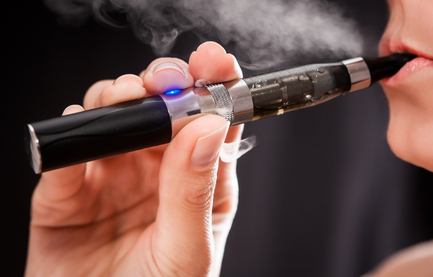Who’s your cougar?
When you hear the term ‘cougar,’ what do you think of? The stereotypical older woman who prowls on unsuspecting young men? The powerful, wealthy woman who can attract young cubs to their fold simply because she can afford to look younger and has money to burn? The older, unmarried woman who only knows how to express her sexuality by publicly pursuing young men for sex?
Or, all of the above?
As women, we often get a bad rap when it comes to expressing our sexuality. So, I find it intriguing that social researchers have started to pay attention to the cougar moniker and whether or not it is a pejorative or a positive vision that expresses that women continue to have sex lives beyond the age of 40.
According to novel research published in the Journal of Aging Studies, the term ‘cougar’ originated with the launch of a dating website geared toward matching older women and younger men, noting that “the story is that one of the two women who founded the website was told by a nephew that the two ladies were like cougars in search of small, defenseless animals.” Since that time, various websites have been launched, annual Cougar Conventions held and hit television series (Cougar Town) broadcast.
Interestingly, it’s only recently that there has been a renewed interest in women’s sexuality in midlife and lord knows, I’ve explored the topic in great detail on FlashFree. However, stereotypes of women losing their sexual desirability, coupled with the overarching notion that women in menopause are equal to women who are sexually dysfunctional leaves little to the imagination or to reality; as the researchers point out, “the dominant sexual script for women over forty has been the frigid older woman.” Moreover, what about the woman who works hard at staying healthy, possesses a youthful demeanor and appearance and counter ideologies that dictate that they must act and dress a certain way? Or, a woman who dates a younger man because she likes him, not because she’s on the prowl for sex or needs arm candy?
The truth is that when a group of women ranging in age from the their 20s to their 60s were asked about the term “cougar” and what it meant to them, they overwhelmingly accepted the so-called behavior associated with the term while rejecting the label itself. “In other words, older women dating or pursuing younger men was accepted by some women as an alternative sexual script.” And why not?
Yet, some women interpreted the concept as positive, saying that the term was a descriptor for a strong, self-confidant decisive woman, a woman with sexual self-assurance and sexual confidence. Some liked the term because “they believed that it called attention to the positive aspects of older women dating younger men,” suggesting a “relationship dynamic [that] makes biological sense because it allows men and women to be in their ‘sexual prime’ at the same time.” Others were drawn to the term because the concept helped level the playing field, rallying against cultural norms and sexual double-standards that “dictate that only men should date younger partners.”
On the flip side? The women who viewed the term negatively found it insulting because it labeled women as aggressive and violent, masculinized them, conceptualized them at “on the prowl for a partner’s body rather than his mind.” Additionally, it might actually distort the picture of who pursued whom; in some cases, it is the younger man who does the pursuing.
The researchers note that “culture shapes our feelings about aging. Women who rejected the term did so because it conjured the image of a specific type of woman…who does not look like a regular woman or…who is desperate and fighting aging or who does not followed gendered norms for sexual interaction.” Yet, when they probed further, many of these women could embrace the idea that the term acknowledges that “women do not stop feeling sexual desire after turning forty,” …”a welcome alternative to images which dismiss them or make them invisible as sexual beings.”
Yet, for as many who have some sort of lapse in their sexual desire or function as they age, there are countless others who remain interested in and highly sexually active well into their 70s and 80s. The theme here is that “women’s experiences with sexuality and aging are far from uniform…and factors such as generation, relationship status, sexual orientation, cultural norms, health or partner’s health” all come into play.
Personally, I fall in the middle. I would like to believe that the sexual script is being rewritten for women as they age, that culture is beginning to accept that women don’t become invisible the minute that they hit age 40. And yet, I don’t care for the negative connotations — on the prowl, helpless young men, insatiable women. In an ideal world, women don’t have to defend every choice that is viewed as at odds with the norm, whether it’s pursuing a career while simultaneously raising children, deciding not to have children or get married, choosing a same sex partner, choosing a younger partner or maintaining health and appearance simply because it feels good. But we are far from that utopian vision and I highly doubt that we’ll realize it in my lifetime.
What do you think? Who’s your cougar?
Read MoreHow to eat processed food. Guest Post by Danielle Omar, MS, RD
My friend and colleague Danielle Omar has been a contributor to Flashfree for some time now. When I read her post “How to Eat Processed Food” on her Food Confidence blog, I knew that I wanted to share it here. Sure, it’s odd that a registered dietician is actually sharing tips on how to eat processed foods versus why you need to avoid processed food at all cost, however, Danielle has taken a unique approach that regular readers of Flashfree and Guyside will appreciate.
Thanks for allowing me to cross-post this terrific information, Danielle!
I eat processed food. And so do you. It’s almost impossible not to. Food is “processed” as a matter of course to get it from the farm (or factory) to your table. But wait, if you’ve done my detox or worked with me privately you know I’m all about clean eating and avoiding processed food.
So what’s the deal? Well, let’s start with what the word processed really means. Aside from what you can just pick and eat, most foods are processed in some way. At the same time, there are foods that people call “healthy” that to me are so processed they’re not even food.
Look at heart healthy olive oil. It needs to be processed in order for the oil to be extracted from it, right? So how do we differentiate between the good-processed and the bad-processed foods? You might say that a good-processed oil is one that is naturally pressed and unrefined. A bad-processed oil is one that is chemically pressed and refined. Because we live in choice-overload at the grocery store it can be confusing. My clients send me emails all the time asking are these crackers better than those? Which yogurt is better? And one of my favorites, would YOU eat this?
So let’s clear up the confusion about the “P” word, starting with what I consider to be good-processed and bad-processed foods. Oh, and I can’t speak to every single food out there so here’s just a sampling of whatI eat.
Good-processed foods
- bagged veggies (yes, those are processed)
- frozen fruit and plain frozen veggies
- miso
- oils (as noted above)
- raw or dry roasted nuts and seeds (I’m not talking Planters)
- oats and plain oatmeal
- single whole grains (i.e., quinoa, millet, wild rice, etc.)
- canned beans (BPA-free like Eden foods) OR boxed beans (Whole Foods has these)
- tuna and salmon in a can (high quality stuff like Vital Choice, Tonnino, Wild Planet)
- dried fruit (no sugar added)
- Plain and organic yogurt (this is a sketchy area; lots of good yogurt that’s not organic or plain)
- goat cheese
- salsa
- granola (like KIND, Purely Elizabeth)
- crisp bread crackers (like WASA, Orgran, Finncrisp)
- energy bars (like Lara, KIND, 22Days)
I’ve got a bit of a hierarchy going with the good-processed foods. For one, I look for minimally processed items. These potentially boxed or bagged foods contain ingredients that I recognize and that I would use at home to prepare the food myself. Yes, this means that I take a bit more time while shopping to read the ingredients. I don’t mind this because the grocery store is my partner in eating clean. It also means that just because a food is gluten-free or is made with quinoa or greens — that doesn’t mean it’s clean eats. Take, for example, this roasted garlic chicken frozen dinner, a gluten-free gem made with spinach from Lean Cuisine.
Ingredients: Water, cooked chicken tenderloin (chicken tenderloins, water, seasoning), modified corn starch, sugar, potassium chloride, yeast extract, dextrose, spice, onion powder, garlic powder, paprika), soybean oil, isolated soy protein, sodium phosphates), spinach, skim milk, onions, carrots, 2% or less of modified corn starch, cheese flavor (cultured milk, salt, enzymes), soybean oil, white white, butterfat, Asiago cheese, salt, cheese flavor (cheddar cheese, cultured milk, salt, enzymes), water, salt, enzymes, cultures, phosphoric acid, xantham gum, seasoning, (autolyzed extract, flavors, water, chicken powder, chicken fat, sugar, sodium lactate, sodium, phosphate lactic acid) potassium chloride, roasted garlic, dehydrated onions, basil, enzyme modified Parmesan cheese, puree, whey, yeast extract, whey, carrageenan, spices, caramel color, chicken fat flavor, cultured whey, turmeric.
I don’t cook with many of these ingredients. For me, I just don’t want the added chemicals (read: toxins) clogging up my cells. I’ve got enough of those coming in from just living and breathing. I’m thinking you probably don’t either. So my answer to this is simple: I don’t buy the Lean Cuisine. Instead, I buy some chicken breasts, sprinkle on some spices, and cook at 375 for about 25 minutes. It really is that easy. I can do it and I don’t even eat chicken.
Bad-Processed Foods
The list of these foods is long and I will not even try to do it justice here. I will just say that these foods areextensively processed in order to be edible, they are not found as is in nature, or they are foods processed using chemicals that I don’t want to be eating. I’m talking mostly about GMOs, additives, preservatives and artificial flavorings. Now some in the food industry might argue that the healthiest food in the world is processed. And that food fortification plays a large role in meeting our nutrient needs. And that processing helps enhance and preserve food quality. All of that may be true. Whole grains are processed and I encourage you to eat them. However, you can get your whole grains in their natural state (see my good-processed list above). You don’t have to buy into this (yes, this is an extreme example):
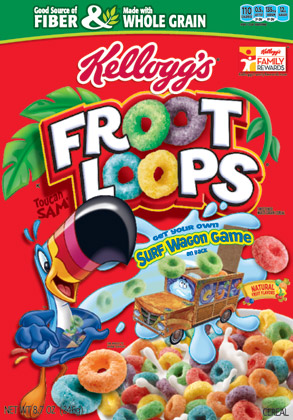 Ingredients: Sugar, corn flour blend (whole grain yellow corn flour, degerminated yellow corn flour), wheat flour, whole grain oat flour, oat fiber, soluble corn fiber, contains 2% or less of partially hydrogenated vegetable oil (coconut, soybean and/or cottonseed), salt, red 40, natural flavor, blue 2, turmeric color, yellow 6, annatto color, blue 1, BHT , Vitamin C (sodium ascorbate and ascorbic acid), niacinamide, reduced iron, zinc oxide, vitamin B6 (pyridoxine hydrochloride), vitamin B2 (riboflavin), vitamin B1 (thiamin hydrochloride), vitamin A palmitate, folic acid, vitamin D, vitamin B12.
Ingredients: Sugar, corn flour blend (whole grain yellow corn flour, degerminated yellow corn flour), wheat flour, whole grain oat flour, oat fiber, soluble corn fiber, contains 2% or less of partially hydrogenated vegetable oil (coconut, soybean and/or cottonseed), salt, red 40, natural flavor, blue 2, turmeric color, yellow 6, annatto color, blue 1, BHT , Vitamin C (sodium ascorbate and ascorbic acid), niacinamide, reduced iron, zinc oxide, vitamin B6 (pyridoxine hydrochloride), vitamin B2 (riboflavin), vitamin B1 (thiamin hydrochloride), vitamin A palmitate, folic acid, vitamin D, vitamin B12.
All of you Froot Loops lovers are cringing right now, aren’t you? Please don’t be fooled into thinking that a bowl of bad-processed cereal in the morning is good for you because it has whole grains in it. Because it also has red 40 and blue 2. Oh, and yellow 6. And blue 1.
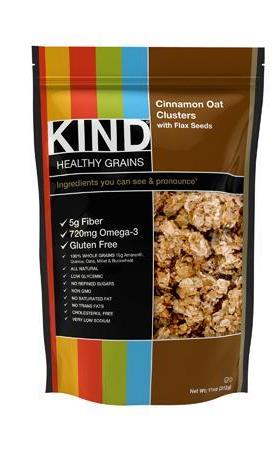 If whole grains are what you’re after, it’s save to say that this would be a cleaner, good-processed choice:
If whole grains are what you’re after, it’s save to say that this would be a cleaner, good-processed choice:
Ingredients: Whole grains (gluten free oats, brown rice, buckwheat, amaranth, millet, quinoa), evaporated cane juice, flax seeds, chicory root fiber, canola oil, molasses, cinnamon, sea salt, Vitamin E
Processed food does not have to be a curse on society. It can be a part of a healthy, clean eating lifestyle — if you choose good-processed foods most of the time. But to me, eating clean is about more than just choosing the right nutrients on an ingredient list. It’s about how your food is prepared. It’s about eating food mostly in it’s natural state.
Yes, processed food is convenient and sometimes necessary, but preparing your own food is a necessity, too. One that takes a little more time, a little more confidence and a little more knowledge of cooking than does tearing open and bag or box and digging in. But I promise, the more you do it, the better you’ll get at it, and the more you’ll appreciate it.
Read MoreGuyside: Youth by association
 I spent much of Sunday afternoon at a 13th birthday party. Well, a lunch really. The 13-year-old in question isn’t my kid. She and her brother have been part of our lives, and we part of theirs, since birth.
I spent much of Sunday afternoon at a 13th birthday party. Well, a lunch really. The 13-year-old in question isn’t my kid. She and her brother have been part of our lives, and we part of theirs, since birth.
We’re still cool enough to Sophia, and to her brother Cameron, that they’ll willingly hang out with us. A steady diet of junk food and Warner Brothers cartoons during their childhoods must have given us some residual cool factor. All I know is that it’s a source of happiness to hang out with them for me, and I hope for them too.
One thing that’s interesting as I and those around me age: at any given age, you can be younger or older than your years. And one of the factors that make the difference in psychological and physical health is hanging around with younger people.
It’s easy to fall into habits, to assume a certain level of “dignity” or propriety that we think is appropriate for a man of my age. The problem with that is we may be losing our sense of fun, our sense of play.
There’s some research and some anecdotal evidence that suggests hanging out with younger people is good for us. A research study in Taiwan examined the psychological impact of taking care of grandchildren on the elderly, and discovered that those interactions have a “protective effect against depression and loneliness.” If that’s more generally true, it’s important. And a 2004 study paired older adults and emotionally disturbed teenagers. It found that the pairs bonded with each other, and that both teens and seniors experienced benefits from the relationship — the older folks benefited emotionally; the teens, behaviourally.
I know from my own life that spending time with our young friends, as well as our two youngest nephews (just starting school now), is always a boost. Spending time with people in the music industry also helps me forge relationships with many musicians who tend to be younger. Musicians also recognize the value of “playing”, which is a bonus.
And when I cycle in a group, younger people in the group push my physical comfort zone and make me go farther, faster, than I might on my own. When I count up all the interactions and the benefits, I get a lot out of spending time with people who are younger than me, whether they’re four years younger than I am, fourteen, or maybe just four. And perhaps they get something out of hanging out with me! It’s a virtuous circle.
In a couple of weeks, I’ll help celebrate the 80th birthday of a cycling friend. He’s in remarkably good shape for a man of 80. And I think that part of his youthfulness is that many of the friends who will help him celebrate are younger than he is. I’m hoping that in 33 years, the same will be true of me.
Photo: “Young punk and old unionist” CC-licenced by Flickr user Simon Oosterman.
Read MoreAn inconvenient truth: no glove, no…
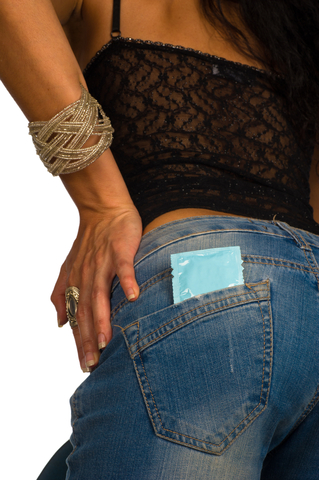 I’ve got something I want to share with you. Sadly, advanced reproductive age has nothing to do with whether or not a woman should use contraception. In fact, according to a literature review published several decades ago, the likelihood of reproductive sterility at age 40 is 40%, and at age 45, 80%. This means that the monthly risk of pregnancy, although declining with less frequent ovulation, may still be as high as 60%, depending on your age.
I’ve got something I want to share with you. Sadly, advanced reproductive age has nothing to do with whether or not a woman should use contraception. In fact, according to a literature review published several decades ago, the likelihood of reproductive sterility at age 40 is 40%, and at age 45, 80%. This means that the monthly risk of pregnancy, although declining with less frequent ovulation, may still be as high as 60%, depending on your age.
In a review published a few years back in the Advanced Access edition of Human Reproduction Update, investigators report that the decline in fertility among women in their 50s remains insufficient to prevent pregnancy. With the exception of hysterectomy, they point to copper and hormonal IUDs, both of which have failure rates of less than 1%.
Additional considerations when choosing a contraceptive method in midlife include:
- Menopausal stage, i.e. how frequent or infrequent are your menstrual periods?
- Menopausal symptoms
- Sexual issues, e.g., desire, lubrication or lack thereof
Although I am not a fan of hormones, selecting a hormonally-based contraception may help to address these particular issues.
So, how long do you need to wear protection? The investigators suggest that contraception should be continued until women become postmenopausal and attain a natural state of sterility. I’d add that if you are having intercourse with more than one partner, that you add another layer of protection — e.g. a condom — to prevent sexually transmitted diseases.
It may be inconvenient, but surely, not as inconvenient (or traumatic) as midlife pregnancy. Do yourselves a favour: use protection!
Read MoreValentine’s Day for the techie in you!
 Time to lose the chocolate and roses and get your tech data geek on this Valentine’s Day. Indiana University scientists who developed the Kinsey Reporter app (found here on Apple and here on Droid) say that they are turning this Valentine’s Day into a laboratory on sexual behavior during the holiday. Their survey, which is available through the mobile app, will collect data on sexual activity, public displays of affection, flirting, and unwanted experiences. Ultimately, they plan to aggregate global experiences that can be displayed geographically via interactive maps, timelines and charts.
Time to lose the chocolate and roses and get your tech data geek on this Valentine’s Day. Indiana University scientists who developed the Kinsey Reporter app (found here on Apple and here on Droid) say that they are turning this Valentine’s Day into a laboratory on sexual behavior during the holiday. Their survey, which is available through the mobile app, will collect data on sexual activity, public displays of affection, flirting, and unwanted experiences. Ultimately, they plan to aggregate global experiences that can be displayed geographically via interactive maps, timelines and charts.
(If you are unfamiliar with the Kinsey Institute, it is one of the world’s leading research organization on sexual health and knowledge. Moreover, a little known fact amongst even my closest friends is that my Aunt used to run the library; talk about kinky boots! But, I digress.)
In a related press release,Filippo Menczer, director of IU’s Center for Complex Networks and Systems Research (and a School of Informatics and Computing professor who helped design the app) says that they are beginning to see some interesting patterns as to how sexual activity varies by relationship status and are even able to dive deeper to ascertain things like the relationship between flirting location and outcome (sounds like data for the next dating app, right?!).
Go ahead; set your own sexpectations this V Day and crowdsource your loving. Who knows? You might just create the next great sexinfographic without trying!
Cheers to love!
Read More
Guyside: Getting testy about testosterone
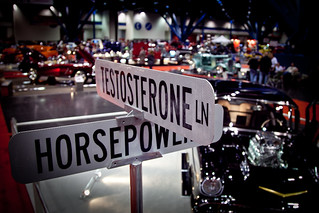 There’s no doubt that men think about the effects of aging on their bodies. And if there were, a viewing of ads for hair colouring, hair thickening agents, or erectile dysfunction drugs would quickly convince you. You could be a new man!
There’s no doubt that men think about the effects of aging on their bodies. And if there were, a viewing of ads for hair colouring, hair thickening agents, or erectile dysfunction drugs would quickly convince you. You could be a new man!
And as regular Flashfree readers will know, one of the things that’s been touted as a solution to the woes of the aging male is testosterone replacement therapy.
The basic idea is that men may have a condition that’s referred to as “Low T.” And so a gel, a patch, a tablet or an injection may bring you back to a more energetic, athletic, virile condition. The pitch has been made more and more convincingly, by all accounts: an Australian research team found that the sales of testsosterone treatments went from $150 million in 2001 to $1.8 billion in 2012.
That’s a 1200% increase. The Australian research indicated that the amount of testosterone being prescribed far outstripped the incidence of “male menopause” or andropause. So what’s going on? Oh, I suspect there’s a generous helping of vanity involved here.
But if it were simply a matter of making men feel better about themselves, it would just be a waste of money. A growing body of research evidence is suggesting that treating Low T may increase the risk of cardiac events. The most recent, an article from the open-access journal PLOS ONE, suggests a substantial increase in the risk of myocardial infarction — what we normally refer to as a heart attack — with the use of testosterone, for men under and over 65 years of age.
I’m sure there are men with diagnostic criteria that would make testosterone therapy an appropriate choice, with a careful calculation of the risks and benefits. But if my hair’s getting a little thin, if I’m not feeling as “macho” as I once was — do I really want to be using a hormone supplement that could put me at risk of a heart attack?
It’s very easy to succumb to marketing-based pitches that appeal to what we think we need as men. But it’s important for us to not jump at those pitches without thinking about the risks and the benefits carefully.
There was a rush to use estrogen and progesterone to help women with symptoms of menopause several years ago, and then a panic when those therapies were associated with increased cardiac symptoms.
I’m no doctor, and I’m certainly not saying that nobody should be using hormones in this way. But I do think that we should think through ALL of our medical decisions and ensure we’re taking the risks seriously.
(photo: CC-licenced image by Flickr user Ed Schipul)
Read MoreSmoking and early menopause
I’m not going to mince words; if you are white and a current smoker, it’s time to stop. Not only are you risking a host of illnesses like lung cancer and heart disease, but you may also be plunging yourself into early menopause.
This is not the first time that I’ve written on this topic and it’s likely it won’t be the last. A few years ago, I shared that in a thorough review of 109 published studies, researchers have found the following:
- Current smokers appear to enter menopause anywhere from 2.5 months to 2.5 years earlier than non-smokers and have 1.3 to 1.7 times greater odds for early menopause
- Former smokers appear to start menopause as much as 2 years earlier than non-smokers, with the risk ranging from 30% to as high as 80%
- Although there is not a lot of information on the severity of smoking habit and menopause (i.e. number of cigarettes smoked daily), there is some indication that women who smoked more than 20 cigarettes daily were likely to start menopause as much as 2 years earlier than women who smoked 11 to 20 cigarettes daily
- The relationship between number of years having smoked and early menopause is unclear
Recent study findings from University of Pennsylvania researchers add to the current knowledgebase on smoking and early menopause, revealing that genetics may play a role. And, while data have already shown that smoking increases the risk of early menopause among women of all races, it now looks as though white women who smoke and have certain genetic variants are especially at risk. In fact, when researchers conducted lab studies on blood drawn from over 400 women enrolled in the ongoing Penn Ovarian Aging Study, they found that white women who reported that they were heavy smokers (at least a pack a day) and whose DNA showed a variation of specific genes (CYP3A4*1B ) entered menopause in almost half the time period as their light smoking (less than one pack daily) and non-smoking peers.
In stark numbers, these women entered menopause an average of 5 years after the entering the study, compared to 11 and almost 14 years, respectively for light and non-smokers. Even more striking was the fact that the women in the study were between the ages of 35 and 47. Women who carried another gene variant — CYP1B1*3 — also had earlier menopause but the contrast to their peers was not as striking.
Smoking exposes women to a variety of toxic chemicals and the implicated genetic variant itself results greater estrogen degradation and possibly even activates chemicals known as PAHs– polyaromatic hydrocarbons — carcinogens in cigarettes that have been shown to be toxic to immature egg cells.
Experts estimate that more than 20 million women in the United States are current smokers. And this figure only applies to combustibles. Personally, I have concerns about the upsurge in e-cigarettes, especially among women and particularly among 18 to 24 year olds who have reported trying them. The Centers for Disease Control reported that in 2012, 7% of students in grades 6 to 12 had tried e-cigarettes. And while current data suggest that nicotine delivered by vapor should theoretically carry less risk than cigarettes, less is known about the chemicals used to vaporize that nicotine and the long-term ills that they may cause.
The bottom line is that if you still smoke and you are in your 30s or early 40s, you are setting yourself up for an early entry into menopause. While a few hot flashes or mood swings may not frighten you, other associated issues like bone loss, increased risk for heart disease and disease and stroke might. More importantly, if you are white and smoking, you may consider signing up to have a DNA evaluation.
I know firsthand how difficult it is to stop smoking. But the risks truly outweigh the benefits of the instant gratification that a long pull on a cigarette can deliver.
Read More









